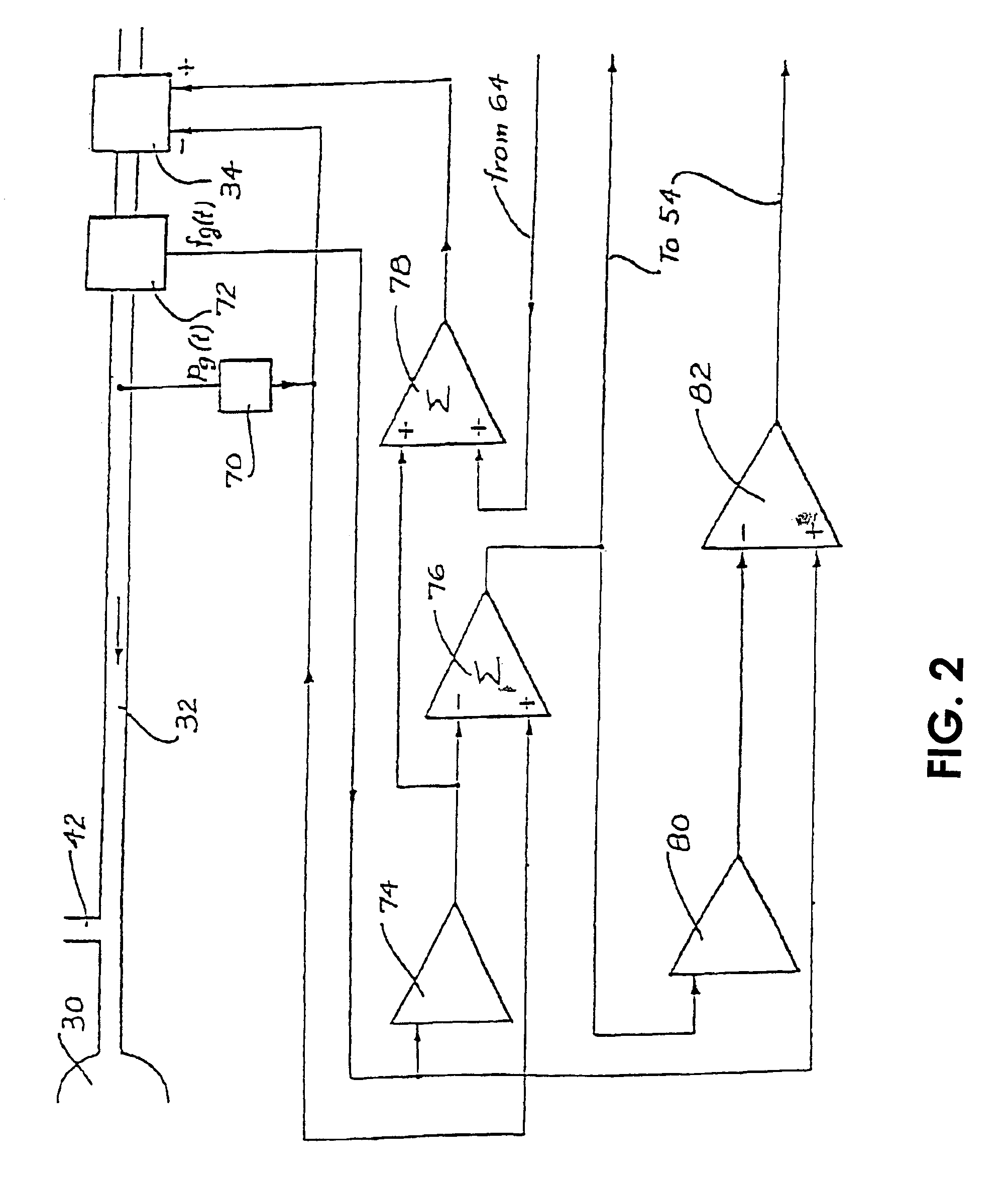Administration of CPAP treatment pressure in presence of apnea
a technology of positive airway pressure and treatment pressure, which is applied in the direction of application, diagnostic recording/measuring, operating means/releasing devices of valves, etc., can solve the problems of decreased ventilation, decreased blood oxygenation, and disruption of sleep, so as to increase the treatment pressure, reduce the existing cpap, and increase lung volume
- Summary
- Abstract
- Description
- Claims
- Application Information
AI Technical Summary
Benefits of technology
Problems solved by technology
Method used
Image
Examples
first embodiment
[0056]The methodology put into place by the controller 62 will now be described. In a first embodiment, there is a pressure response to apneas, but not to indicators of partial obstruction, and therefore snore detection bandpass filter 60 is not required.
[0057]An initial CPAP treatment pressure, typically 4 cmH2O, is supplied to the subject. The FLOW signal is processed to detect the occurrence of an apnea (as will presently be discussed) and, at the same time, the Pmask signal is recorded. When it is determined that an apnea has occured its duration is recorded. At the same time Pmask is compared against a pressure threshold, Pu. If Pmask is at or above Pu the controller will act to maintain or reduce that pressure. If, on the other hand, Pmask is below Pu, the controller will act to increase the treatment pressure by an amount ΔP.
[0058]In a preferred form, ΔP is determined as follows:
ΔP=[Pu−P]f(ta) (1)
where
[0059]ΔP is the change in pressure (cmH2O)
[0060]Pu is the pressure thresh...
second embodiment
[0077]This second embodiment is implemented using the following pseudocode.
[0078]
Set initial CPAP pressure to 4 cmH2O.Set apnea duration to zero Clear “start of breath” flag REPEAT every 1 / 50 of a second Sample mask pressure (in cmH2O), mask airflow (in L / sec), andsnore (1 unit corresponds loosely to a typical snore). Calculate mask leak as mask airflow low pass filtered with a timeconstant of 10 seconds. Adjust snore signal for machine noise. Check for presence and duration of any apnea. Check for start of breath. IF start of breath flag set: IF apnea duration greater than 10 seconds AND current CPAP pressure less than 10 cmH2O: Set delta pressure for this apnea to (10 − current CPAP pressure) / 6 times 8 cmH2O per minute of apnea duration. Add delta pressure for this apnea to total delta pressure due to apnea, and truncate to 16 cmH2O Reset apnea duration to zero. ELSE Reduce total delta pressure due to apnea with a time constant ...
third embodiment
[0096]As previously discussed, one prior art method for avoiding unnecessary increases in pressure in response to open airway apneas is to determine the conductance of the airway during an apnea using the forced oscillation method, and only increase mask pressure if the conductance is less than a threshold. However, if the nasal airway is narrow or if the subject has lung disease, the airway conductance may be low even in the presence of an open airway and the forced oscillation method may still falsely increase pressure in response to open airway apneas. Conversely, the combination of the forced oscillation method with embodiments of the present invention has the added advantage that in most cases open airway apneas are correctly detected by the ‘forced oscillation method’, but in those cases where the forced oscillation method falsely reports a closed airway, the mask pressure will not increase above 10 cmH2O, thus preventing run-away increases in pressure. This is demonstrated in...
PUM
 Login to View More
Login to View More Abstract
Description
Claims
Application Information
 Login to View More
Login to View More - R&D
- Intellectual Property
- Life Sciences
- Materials
- Tech Scout
- Unparalleled Data Quality
- Higher Quality Content
- 60% Fewer Hallucinations
Browse by: Latest US Patents, China's latest patents, Technical Efficacy Thesaurus, Application Domain, Technology Topic, Popular Technical Reports.
© 2025 PatSnap. All rights reserved.Legal|Privacy policy|Modern Slavery Act Transparency Statement|Sitemap|About US| Contact US: help@patsnap.com



